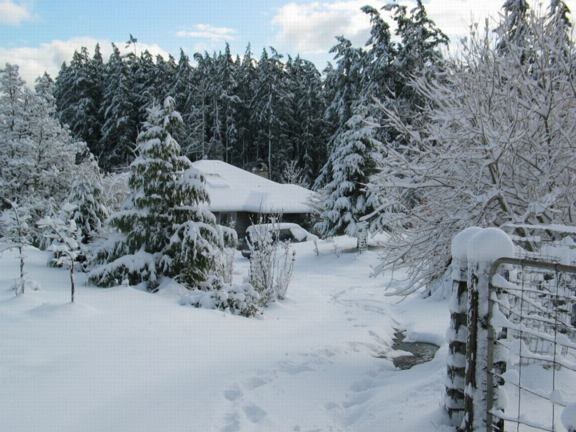| Every few decades, Victoria receives very large snowfalls, including the more than 100 cm (39 in) of snow that fell in December 1996. On the other hand, roughly one third of winters will see virtually no snow, with less than 5 cm (2 in) falling during the entire season. When snow does fall, it rarely lasts long on the ground. For Victoria Harbour, the climate records report annual mean snowfall totalling 29.3 cm ( about a foot) falling on 8 days..The Environment Canada website lists Victoria ( Airport ) as the city having the fewest snow days of all cities in Canada (10) The mildest winter (7.4 degrees average) and the lowest snowfall (43.8 cm.)The headlines in the Victoria Times for November 27, 2006 read :
“Snow shutdown |
| The snowstorm of November 26, 2006 can be traced from the Victoria harbour data on the Environment Canada website. Here it can be seen that the snow started on the morning of November 26 and continued until early morning of the next day. It snowed again midday on the 29th of November . The temperature that week took an unseasonal plunge. |
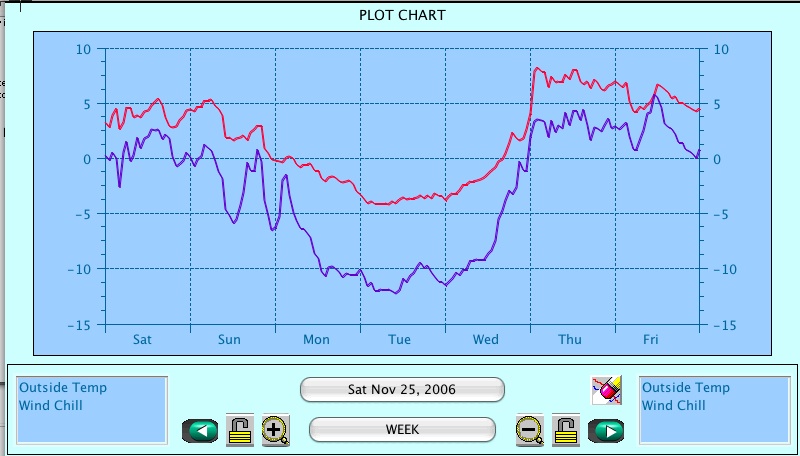
On Race Rocks our weather station recorded the windchill from the North East pushing the temperature down to minus 13 degrees Celsius
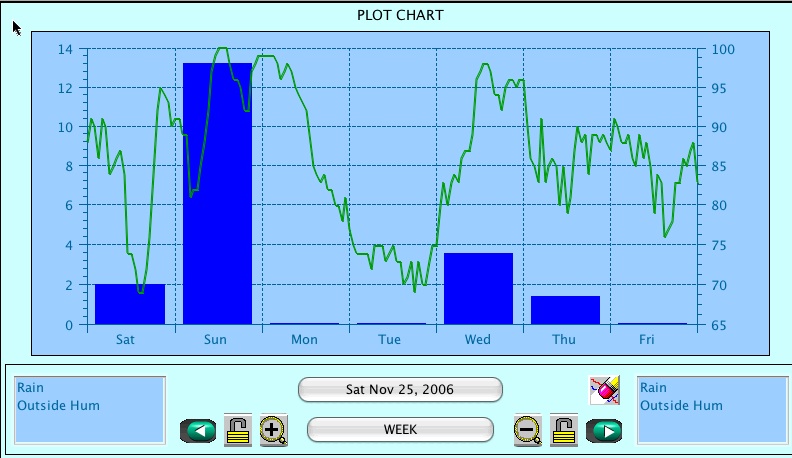
The blue bar represents rainfall, with the scale in mm.on the left. The green line is humidity. After Sunday, the freezing temperature prevented the instrument from registering rain. for several days. Due to blowing snow, it is unlikely that all snow that fell was measured..
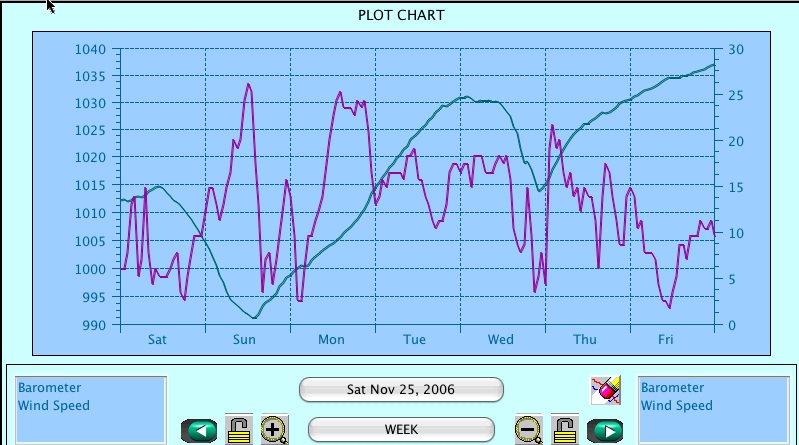
Wind speed is the purple line, and barometer is the blue line. Note how the barometer plunged just as the snowstorm started. The wind remained high for most of the week. This graph represents the surface wind profile. At the top of the tower it averaged 10-15 knots higher.
THE ABIOTIC EFFECTS OF SNOW:
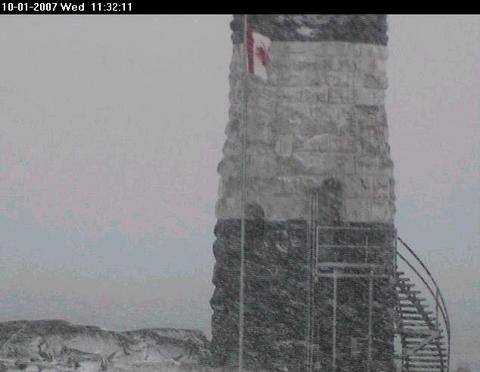 Our second snowfall for the year arrived on January 10, 2007. PB took this photo for us. This was unusual for Victoria as we had been smuggly assuming that we had already had our share of snow that stayed for a week for the winter.
Our second snowfall for the year arrived on January 10, 2007. PB took this photo for us. This was unusual for Victoria as we had been smuggly assuming that we had already had our share of snow that stayed for a week for the winter.
No research has been done at Race Rocks on the effects of snow on the animal and plant life other than the observation that the birds disappeared while these severe storm events were in progress. It is also almost impossible to access Race Rocks during a snowstorm since the wind blows in from the north-east and the exposure at the jetty prevents a boat from landing.
| See the exercise on the water cycle |
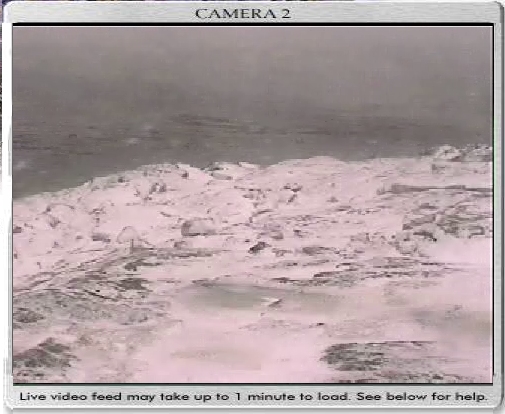 This image from the webcam in the November, 2006 snow storm showed a bleak landscape, with no seagulls in the usual spot. In a week they had all returned however, as mild temperatures returned.
This image from the webcam in the November, 2006 snow storm showed a bleak landscape, with no seagulls in the usual spot. In a week they had all returned however, as mild temperatures returned.
The topic of SNOW ECOLOGY has not been extensively studied. One of the classic works on the topic was done by William Pruitt of the Department of Biology at the University of Manitoba.
This paper is available from the TAIGA BIOLOGICAL STATION THESES AND RESEARCH PAPERS
( Formozov-inspired Concepts in Snow Ecology in North America. Bulletin Moscow Society of Naturalists, vol.104, No.3:pp.13-22. William 0. Pruitt, Jr.)
Records of snowfall from 1985 to February 1996 may be found on the Environment Canada Website Search that website for total snowfalls during that period click on British Columbia/advanced search/ then enter Race Rocks in the Search by Station Name section. Use the pull down menues to find the year, month or day of interest
